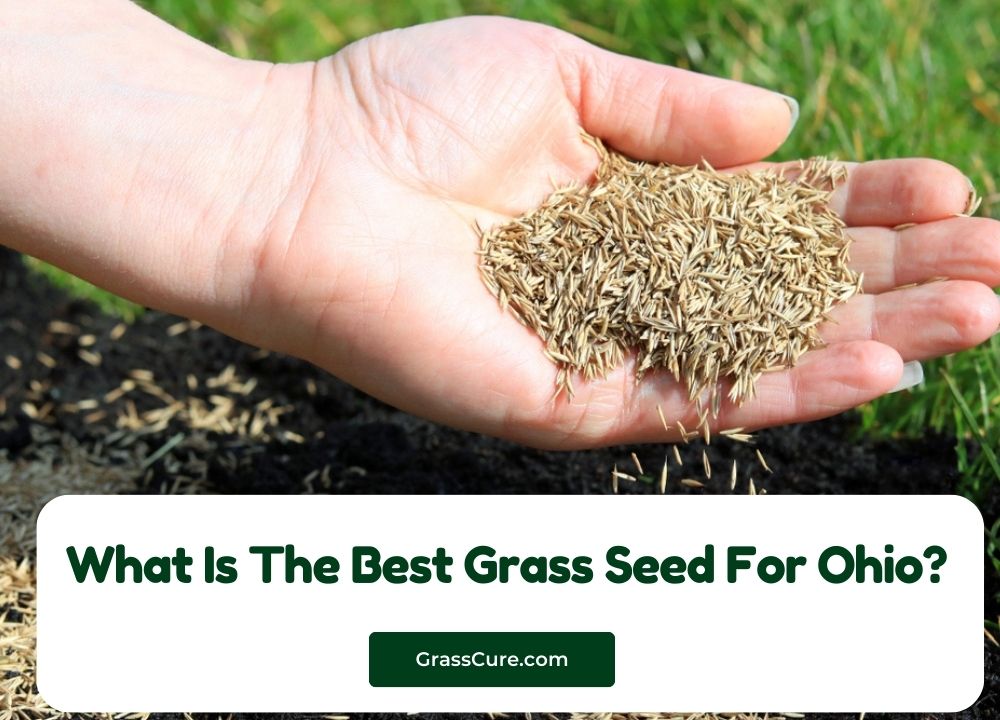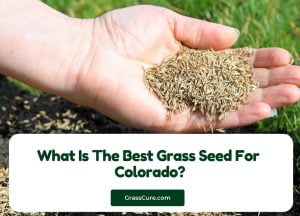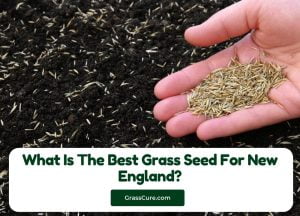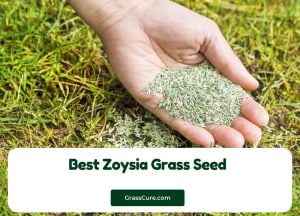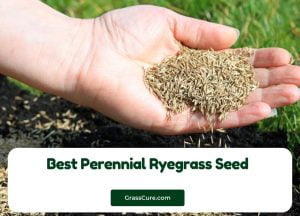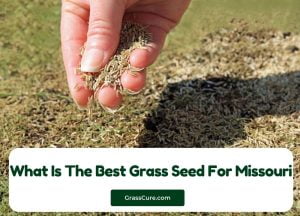In Ohio, you can ensure abundant vegetation by planting grass seeds in early fall or spring in the cold season. When the soil temperature is 50-65 degrees Fahrenheit, it is best to produce and monitor. In the Buckeye state, the time it takes for grass seeds to be consumed depends on the site’s primary location, but soil temperature, method, and alkalinity are also essential factors.
Contents
What is the best grass seed for Ohio?
Cool-season grasses typically grow on Ohio lawns, and all four types are the most popular because they produce better. Keep in mind that the growth rate can vary depending on the temperature. The germination period described below is a general time frame that will help you plan and plant seeds for the best results.
Kentucky Blue Glass:
This Kenturky Blue grass seed will actually start germination in ten to twenty-one days, but it can actually take a bit longer.
It is a high-quality grass that can make a beautiful lawn. Kentucky bluegrass grows well in the sun but can be mixed with fescue and used in cool places. It can successfully fill in exposed or damaged areas, but it actually takes six months to thicken. This grass seed is hardy and can withstand the harsh Ohio cold, and the newer varieties are disease-resistant.
Similarly, you can choose from many types. Kentucky bluegrass seeds usually germinate in 10 to 21 days, but horse tooth crabs (Digitaria spp.) Can inhibit growth. It takes at least six months for the KBG to thicken on the stiff grass. Heavy watering will help keep your lawn green and healthy, especially during times of drought. The varieties that we recommend for this area which cover the zones Five (a) through six (b) include the following strains, Julia, Compact, American, and Midnight.
Check Best Kentucky Bluegrass Seed
Fine Fescue:
The Fine Fescue grass seed germinates a lot faster than Kentucky bluegrass with the range between five and seven days. It actually does grow well in the shade and is generally used to mix seeds, but growth alone is outstanding.
Fine Fescue is an excellent choice for Ohio’s diverse climate. Its adaptability to both sun and shade, along with its resistance to drought, makes it the best grass seed for Ohio. This cool-season grass variety thrives in the state, offering a lush, green lawn that can withstand the challenges of Ohio’s weather. Choose Fine Fescue for a vibrant and low-maintenance lawn in the Buckeye State.
Perennial ryegrass:
This super-fast grass seed germinates in 3-5 days, making it ideal for mixing with much slower Kentucky bluegrass. It can withstand cold heat, has an excellent texture, and is drought resistant.
Similar to KBG, perennial ryegrass (ryegrass) germinates in 3 to 5 days. It actually grows well in Ohio and is cold and heat resistant, but ryegrass seeds grow best when mixed with black grass. Perennial ryegrass forms a dense canopy that can control weed growth.
Coarse grass (Agrostis spp.) Must be cut frequently for use in golf courses and peaceful gardens. At the risk of disease and parasites
Check Best Perennial ryegrass Seed
Tall Fescue:
This grass seed germinates in 10 to 14 days. It has a grainier texture and broader leaves than the others. Due to its very high resistance to drought and heat (even higher than Kentucky bluegrass), the lawn remains green even during the hot summer months. This seed is ideal for the prairies of southern Ohio.
A tall, slender stool (Festuca arundinacea) with thick rhizomes and leaves that grow well in shaded areas. The seeds germinate in 5-7 days. Tall fescue is moderately resistant to the disease but produces “brown spots,” especially in July and August. Fine fescue grows best in well-drained soils and has a low retention rate.
Check Best Tall Fescue Grass Seed
What is actually the best time of year to plant grass seeds in Ohio?
For the new weed to have the best growth opportunities, it should be sown at a time that stimulates germination, and the roots should take root before the first frost.
Northern Ohio:
In cities in northern Ohio (Cleveland, Toledo, Akron, etc.), planting grass between August 15 and September 15 promotes germination, and the roots are used before the area’s first frost.
Similarly, in this period from mid-August to mid-September, the weather is optimal for the seeds to have the most significant potential to grow and mature. And the fall weather is usually optimal for growth.
Central Ohio:
If you actually live in central Ohio, you can grow grass between September and mid-October. Similarly, From September to mid-October, grass seeds are optimistic for plating in Franklin, Delaware, Ricking, and Pickaway counties.
Southern Ohio
The September planting is also great for planting on lawns in southern Ohio counties (including Ross, Scioto, Hamilton, and Brown). But if the actual temperature continues to rise, you can actually sow at the end of October.
However, if you miss these plants’ windows, it would be best to wait for the last spring frost (mid-March to mid-April).
Why is it best to plant grass seeds in late summer / early fall?
In USDA plant resistance zones 5-6, the average minimum temperature is between -15 degrees and zero. In Districts 5a through 6b of various parts of Ohio, the state is basically divided into three parts: north, center, and south.
When the soil temperature drops to 50-65 degrees, it is better to sow. This temperature range is ideal for promoting healthy growth and seed germination. If you plant the seeds too early, the weeds will try to take over. It is also still sweltering, and the heat will stress delicate plants.
Tip: Planting cool-season grass in late summer or early fall will result in denser, denser lawns.
If you need to plant a new lawn this fall and are looking to choose between seed or grass, the latest blog post will discuss the pros and cons of grass.
FAQ:
What is the best grass seed for Ohio?
Fine Fescue is an excellent choice for Ohio due to its adaptability to various conditions, including sun and shade, and its resistance to drought.
Can I use Kentucky Bluegrass in Ohio?
Yes, Kentucky Bluegrass is a popular option in Ohio, especially for those seeking a lush, durable lawn. However, it may require more water and maintenance.
What grass seed is best for high-traffic areas in Ohio?
Perennial Ryegrass is a great choice for high-traffic areas, thanks to its quick establishment and ability to withstand wear and tear.
Is there a drought-resistant grass seed for Ohio’s hot summers?
Yes, Tall Fescue is known for its drought resistance, making it a suitable choice for Ohio’s warm, dry spells.
Can I mix different grass seed types in Ohio?
Yes, blending grass seed varieties like Kentucky Bluegrass, Fine Fescue, and Tall Fescue can provide a well-rounded, adaptable lawn that suits Ohio’s climate and conditions.
Conclusion
A beautiful lawn starts with choosing the best grass seeds. However, planting is only one part of a comprehensive lawn health plan that includes all lawns’ needs.
Choosing the perfect landscaper gives you the highest quality grass seeds in Ohio. It’s a great start to the lawn, and the property’s daily maintenance provides everything you need. They must remain in perfect condition throughout the year. It’s long.
From the weeding phase to maintaining the mature lawn, we’ve got it covered for you when it comes to your garden. The choices you make now will help your yard succeed in the future, so we can actually answer any questions you have at any time.

